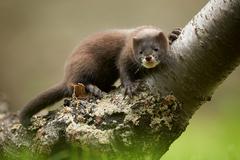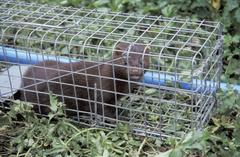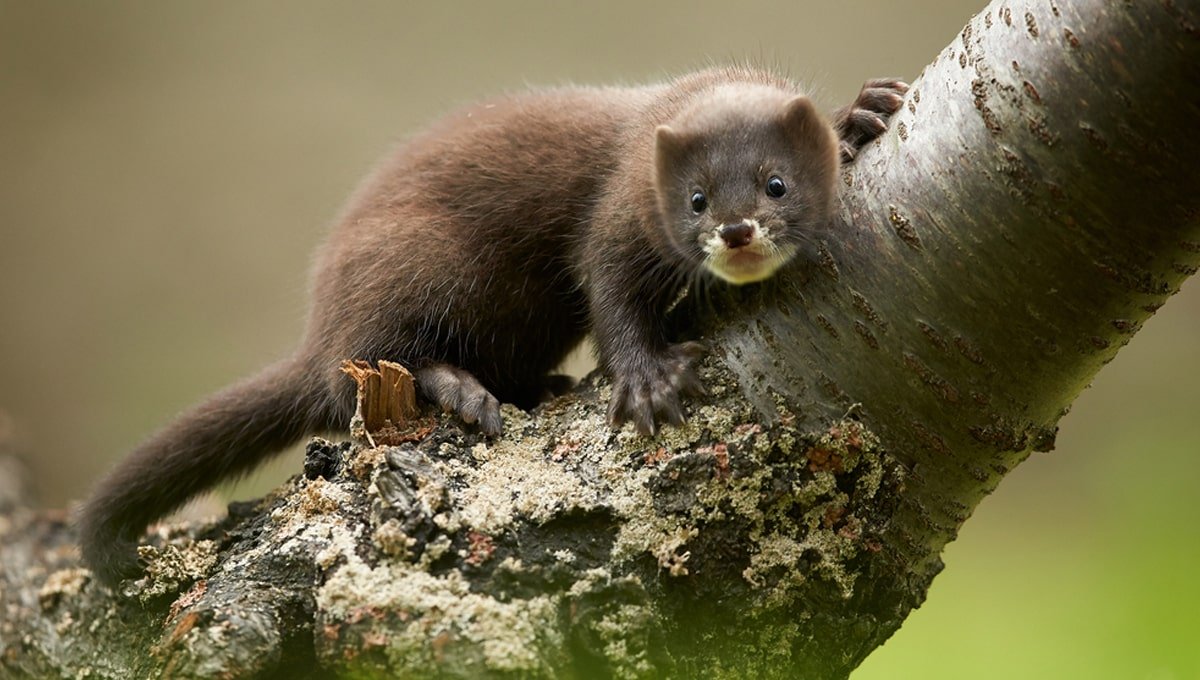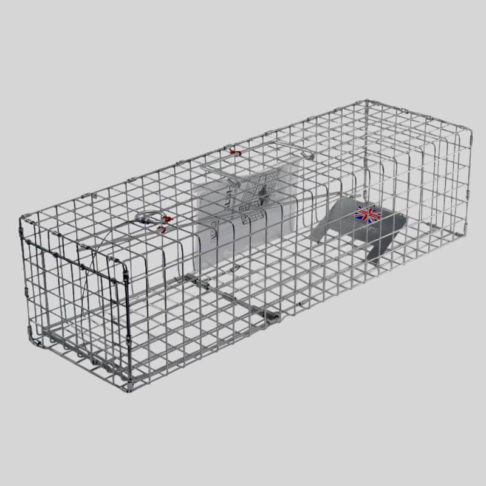Mink are members of the weasel family. In this article we aim to tell you how to to get rid of mink.
The mink that can be seen in the wild today are descendants of the American mink brought to british fur farms in 1929. Mink are opportunistic and feed on birds, their eggs and mammals such as waterfowl, ground nesting birds, ducks, water vole, shrews, frogs, fish and rabbits.
Their natural colour is glossy dark brown, almost black but many are lighter due commercial farmers breeding paler colours.

They are curious and despite being shy of humans, they love to investigate. They spend most of their time in their dens and are most frequently found by water.
They mark their territory with scats (dung) and scats, along with footprints can be a sure way to identify the presence of mink.
Female mink have a single litter each spring and while nursing, will hunt voraciously, having a devastating effect on water voles and nesting birds within their range (approx. 3km of waterways)
Mink are often mistaken for otters and care must be taken to identify correctly before implementing any control methods. Live traps are a must so that any non-target wildlife can be released. Mink are much smaller than otters and generally have darker fur, with bright white markings on their chin and throat. They have long slender bodies and necks and short legs with partially webbed feet.
Mink have bushy tails, whereas otter tails are large and flat with a broad base.
Mink are ferret-like, about the same size, with a pointed muzzle, whereas otters have broad muzzles, like a dog, and a large flattened head. A mink is similar in size to an average domestic cat, otters are more like a medium sized dog. If you need to identify a swimming mink, it holds its head and body high out of the water. Otters will swim with only the head and part of the tail visible.
What damage do mink cause?
Mink can cause untold damage to our native wildlife, particularly the water vole because female and young mink are small and agile enough to follow a vole into its burrow. These animals are an alien species and devastate populations of water birds, such as moorhen and ducks.
Mink are aggressive predators and cause significant damage to housed or penned game birds or poultry by killing large numbers, far more than they can eat. They also damage fish stocks. Knowing how to get rid of mink will help avoid this kind of damage.
How to tell you have mink?
- It is often said that mink cause mass destruction and they do indeed kill much more than they can eat, so signs of a fierce struggle and a large amount of devastation is a clue. Their mindset is to kill first and come back to eat at leisure. They often stack kills in neat piles or rows.
- Bite marks. The victims will also have bite marks at the back of the neck, or the head may be removed completely. Mink are active early dawn, dusk and nighttime and are skilled hunters, completely clearing duck and fishponds over a few nights.
- They prefer to occupy ready-made dens and this may range from hollow logs, rock piles, logjams, burrows under tree roots or holes in river banks.
- Mink tracks are star-like and much smaller than those of an otter. There is a gap between the pad and the toes.
- Their scat (dung) is thin, brown-black and about 6 inches long and it may contain particles of fur and bone.
Before you go on the attack
Consider the time of year and the weather. There are two optimum times in the year to trap.
- January to mid-April. This is when mink breed, and in so doing you will minimize the potential population.
- August to December. To catch dispersing and wintering animals
The only time you shouldn’t set traps is when the female mink may have dependent young (mid-April to end of July)
Do not set traps in extreme weather – torrential rain or storms – as this can cause undue distress to captured animals.
Remember that once started, trapping should be kept up because mink will re-colonise unoccupied areas if they are not controlled
Weapons available
Trapping is the legal and most effective way of controlling mink. Live capture using a cage trap, followed by shooting, is the most appropriate method because it avoids the risk of harming non-target species. It is easy and humane and allows the release of non-target species such as the water vole.

In order to minimize the chance of capturing otters, the trap opening should be small enough to exclude them or be restricted by adding an otter guard.
Mink Cage Trap
The Mink Cage Trap is a heavy duty single catch device, once an animal steps on the treadle the drop bar holds the door firmly closed.
Deployment
- Traps should be set where mink are most likely to encounter them, namely at confluences of watercourses, inlets or outlets for ponds and lakes, where drains, hedges or fence lines meet watercourses.
- Islands and purpose built mink rafts are also good places to locate traps.
- Traps should not be set in the open, particularly near public footpaths, so as to avoid distress to the trapped animal.
- A co-ordinated programme of control is advisable as it has been shown that trapping is most successful when traps are placed at 1km intervals on a watercourse.
- Once the trap is set, ensure the cover fits properly so the animal is sheltered. Baiting the trap with cat food or fish heads or mink pheromone may increase the chance of trapping mink.
- Once set, the trap should be checked at least once every 24 hours. The best time to check is in the morning as most animals are active at night.
- Non-target species must be released but if you catch a mink, it must be dispatched. It is illegal to release it back into the wild. This is also a legal requirement if you catch a grey squirrel, but rats can be killed or released at your discretion.
Conclusion
How to get rid of mink:
- Monitoring using a mink raft
- Live trapping
- Coordinated control programme
For more information on how to get rid of mink, get in touch today


